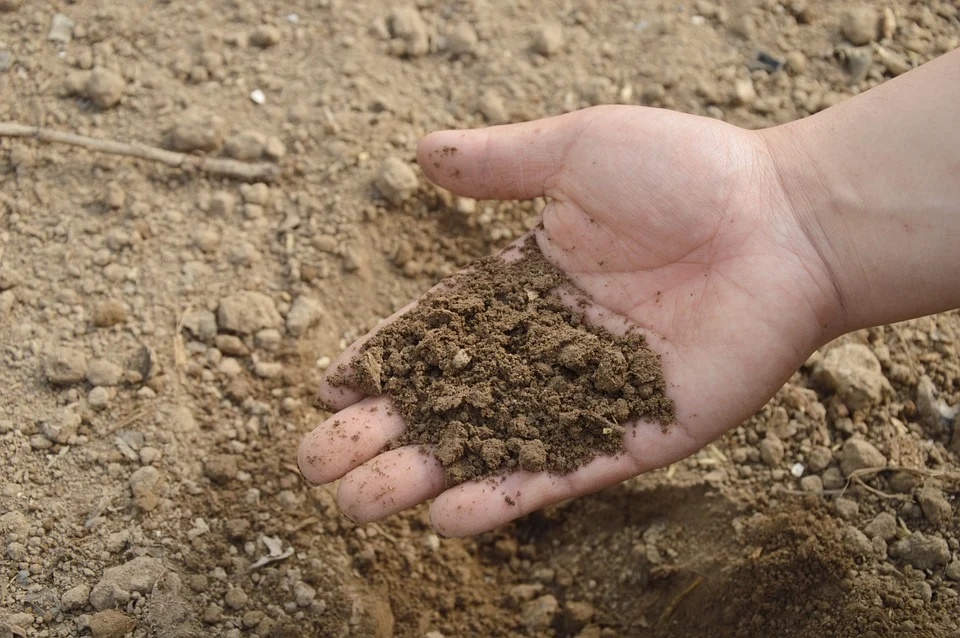Intensive agriculture and deforestation are the main causes of land degradation associated with soil erosion, leaving large areas at risk of losing the fertile topsoil. Together with the leakage of accompanying nutrients and chemicals into water bodies, this poses a serious threat to sustainable agricultural production, environmental protectionб and food security in many world’s regions.
Appropriate soil conservation measures such as smart crop rotation, water retention, reduced tillage, and others can help reduce soil erosion. However, these measures will not be effective without identifying areas that are at high risk of erosion. Therefore, a quantitative approach is needed to better identify such risk areas in order to improve land use. The development and improvement of methods for planning and tracking soil health are important in identifying areas where soil erosion and deposition are most significant. But what actions do you take afterwards? How do you preserve soil health? Luckily, modern tried-and-true technologies developed specifically with the purpose of soil conservation are already here.
Land Conservation Technologies
First of all, it’s critical to understand that soil conservation practices will differ depending on the location and its climate conditions. However, there are key elements that apply to all, such as minimum soil disturbance (reduced tillage techniques), mulch maintenance, and smart crop rotations planning. Since modern tilling technologies take the center stage when it comes to soil conservation, let’s get into more detail on what they are and how they help improve lands.
- No-Till technology is not only a refusal to plow, but a sophisticated system of no-till, which provides for maintaining an intact soil structure, leaving stubble and mulch from plant residues on the field, and direct sowing into the furrows cut by the seeder. Mulch reduces moisture evaporation, protects soil from erosion, restores its fertility, and prevents soil degradation.
- Strip-Till technology provides for tillage simultaneously with sowing to a depth of 15 cm exclusively in the row zone, and the aisles together with stubble and mulch from plant residues remain untouched. This technology allows for reducing fuel consumption significantly and maintaining soil moisture levels.
- Mini-Till technology implies:
- Grinding plant residues with combines simultaneously with harvesting
- Stubble plowing immediately after harvesting the predecessor to a depth of 6-8 cm
- Autumn treatment with disc harrows to a depth of 15-18 cm
- Seep loosening of the soil to a depth of 35-40 cm every three years
The use of Mini-Till technology enables reducing the cost and resources for soil cultivation, to ensure natural soil structure preservation, and to reduce the loss of soil moisture.
Benefits of Soil Conservation Technologies
Here are the main benefits soil conservation technologies offer.
Reduced Threat of Erosion
With the help of no-till technology, it is possible to reduce the erosion of the fertile soil layer, which is carried away by the wind from the flat steppes, for example, as in the USA and Canada. And also to reduce water erosion, due to which pesticides and other substances from the fields get into the water. In addition, since crop waste remains in the fields, the content of organic matter increases in soil, which means moisture is retained and the level of phosphorus rises. As fuel costs are reduced with a zero-treatment system, carbon dioxide emissions are reduced accordingly.
In different countries, no-till technology is used for different purposes. For example, in America – to combat wind erosion, in Canada – to preserve moisture in the steppe regions, and in Brazil – to prevent the loss of the top soil layer that appeared in the place of destroyed tropical forests.
Higher Yields and Lower Costs
The growing implementation of soil conservation technologies is also driven by socio-economic conditions. Reduced tillage allows for cutting costs on labor, machinery, and fuel. In addition, yields are increased and production costs are reduced.
Environment Preservation
In countries like the United States, Australia,Brazil, and Canada where reduced tillage has already been practiced for a long time, its positive environmental impact is easily visible. That includes improved soil quality, reduced erosion and water run-off from farmlands, better water quality, and reduces carbon emissions.
Improved Soil Quality
Of course, reduced soil tillage results in better soil quality, meaning the increase in the soil organic matter content, which is critical for both soil health and crop growth.
Soil erosion poses a significant threat to the sustainability of agro-ecosystems and land productivity worldwide. Ecologically-friendly soil cultivation is not about not touching the soil, but about not limiting its vital functions, characterized in one word – fertility. Without providing extended restoration of soil fertility, the agricultural business is driving itself into a dead end.
Soil conservation is relevant today and will remain relevant forever, since the land surface occupies only a small of the Earth’s surface. And the land suitable for crop cultivation is even smaller. That is why its conservation and improvement are of critical value when it comes to meeting the current and future food needs of humanity.

